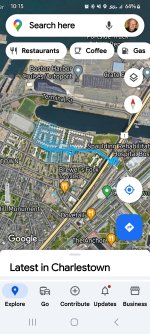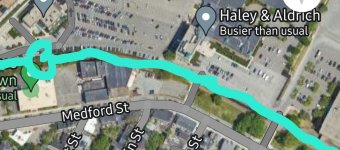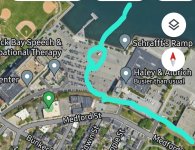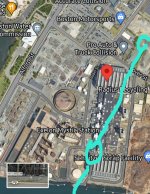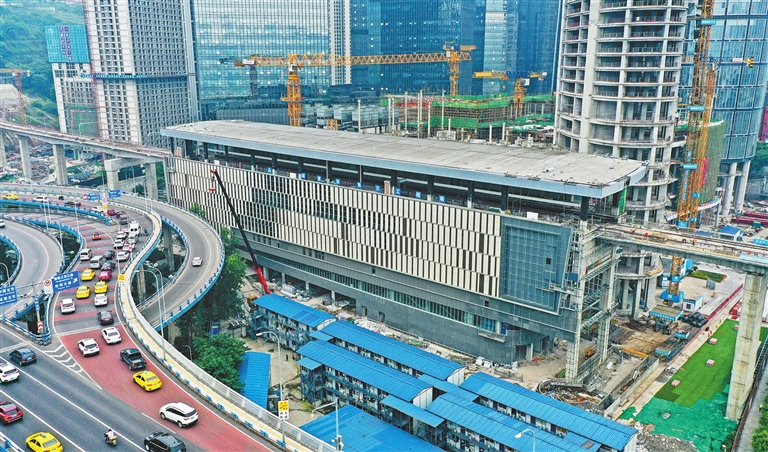But that brings up another point:
Splitting the "Urban Ring" into two along the Eastern Route really isn't a bad thing - it will already be used as such.
If we assume very few riders will go from Assembly all the way to Airport, then the demand pattern along this stretch really serves as two routes:
(I excluded Harvard for a simple reason: The cost of building that will likely be nearly the same as fully grade-separating the "Silver Line" here, including a harbor crossing.)
The choice of colors is not a coincidence.
- "Gold Line" is your standard Urban Ring. As I discussed above, its demand probably ends at Eastern Ave.
- "Silver Line" is basically today's SL3. As I'll discuss below, "terminating" it at Chelsea probably won't hurt much.
Suppose we build them exactly like this:
Gold as LRT (or HRT if you're ambitious), and
Silver as BRT. What are you missing out?
1. Everett to Airport (both BL and Logan access)
2. Everett to Seaport and South Station
Now suppose
you don't even want SL3 to cross Chelsea Creek, and just terminate it south of the bridge. What else are you missing out on?
3. Chelsea to Airport (both BL and Logan access)
4. Chelsea to Seaport and South Station
You can see how they're very similar problems. #1 and #3 actually have solutions that are potentially much more cost-effective, if not straight up better: the
T104 bus in the redesign, which connects Malden, Glendale, downtown Everett, downtown Chelsea, and BL Airport Station. It serves the core density of Everett and Chelsea much better than any station on the Eastern Route, not to mention it serves Malden that the Urban Ring can't hope for.
(Chelsea also has another connection to the Blue Line: the T116.)
#4 has another easy and better solution: Extending the T111 bus to Seaport via the
Downtown Bus-Priority Corridor in the BNRD, or what
@Riverside calls
"the Navy Line". It's a corridor connecting North Station to South Station and Seaport (Summer St) for the T7/93 bus, but has the potential to do more; the StreetBlogMass article I linked even mentions the 111. Such an extension benefits even more Chelsea riders - who can now go more directly into downtown than stopping at Haymarket - than SL3. Even the distance to Seaport doesn't differ by much.
#2 can be solved with a similar approach, if we want to: add another bus route from Everett's Broadway to Rutherford Ave and then to the downtown bus corridor. Such a route has not been proposed yet - and
Everett residents didn't like a version of SL6 that stops at Haymarket - but it can be introduced if there's demonstrably strong demand from Everett to South Station and Seaport. In fact, such a route would probably stand out more for Everett than it does for Chelsea due to distance advantages.
To summarize:
On a closer inspection, the need for a continuous Urban Ring service from Sullivan to Airport - or even that of a better Chelsea Creek crossing for transit - really isn't nearly as high as you may think, and definitely not worth the hassle of building an expensive river crossing.
Plus, treating the "Gold" and "Silver" lines as ending at Chelsea opens up possibilities for interesting, "semi-radial" extensions, like this:
This actually has some value. It's one of the cheapest ways to bring rail as close to downtown Revere as possible, with the only other reasonable way likely being a median-running El on Revere Beach Pkwy. Yes,
I agree with F-Line that the station has bad walkshed, but it could have been worse. At least it's only a 12-min walk to downtown Revere, not terribly longer than the
9-min walk from Malden Center station to the true Malden Center.
As for the "Silver" Line, if you're feeling really ambitious and managed to build a grade-separated ROW all the way to South Station, you can even extend it to Everett, then via Saugus Branch to Malden Center and further northeast, kinda like Riverside suggested
here.
(Or, heck, just pave a busway there and extend SL3 as BRT, with a shared BRT/LRT corridor between Chelsea and Everett.)

